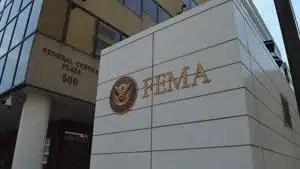(The Center Square) – The U.S. Department of Justice is urging a federal district court judge to deny a motion to dismiss its challenge to Illinois’ migrant sanctuary policies.
Arguing Illinois’ migrant sanctuary policies “allow criminal illegal aliens to move freely throughout the United States, inflicting harm on victims that would have been averted had the alien been detained,” the DOJ moved Tuesday to deny the motion to dismiss from Chicago, Cook County and the state of Illinois.
The DOJ filed its lawsuit shortly after U.S. Attorney Pam Bondi was sworn into office under the Trump administration.
Wednesday, state Sen. Javier Cervantes, D-Chicago, said the progressives in the General Assembly are going to have to continue to play defense.
“We’re doing our best right now here to look at what’s happening and then build those policies to be on the defense, because we have to,” Cervantes said during an unrelated news conference in Springfield. “That’s what we’re here for.”
State Sen. Terri Bryant, R-Murphysboro, said it’s a new day with the Trump administration.
“The harder they push, they’re going to come up against a guy who is not going to be pushed around in President [Donald] Trump,” Bryant told The Center Square Wednesday at the capitol in Springfield. “We think they’re going to find out that this DOJ under this president is going to push back very hard.”
The U.S. Department of Justice is urging a federal district judge to deny a motion to dismiss their challenge to Illinois’ migrant sanctuary policies. Illinois state senators from both sides of the aisle provide reaction.
In its filing, the DOJ said Illinois’ migrant sanctuary policies “work an extraordinary assault on the Federal Government’s enforcement of the immigration laws at a time when the United States is facing a ‘national emergency’ from the unprecedented ‘illegal entry of aliens’ into the country.”
Illinois’ state and local migrant sanctuary policies are preempted by the Immigration and Nationality Act, the DOJ argues, “because they stand as an obstacle to achieving the full purposes and objectives of that Act.”
In their motions to dismiss filed last month in the case, the state of Illinois said the DOJ’s lawsuit is misguided.
“Consistent with the Tenth Amendment, federal law preserves Illinois’s sovereign right to opt out of assisting federal immigration agents with their civil immigration enforcement responsibilities,” the filing said. “That is what Illinois has done through its statutes, the TRUST Act and the Way Forward Act.”
The DOJ argued migrant sanctuary policies that prohibit state and local law enforcement cooperation “impede congressionally sanctioned and authorized federal immigration law.”
“Under the Tenth Amendment, Congress must exercise its legislative power over individuals directly and may not commandeer States into enacting a federal regulatory program,” the DOJ said. “Under the Supremacy Clause, ‘when federal and state law conflict, federal law prevails and state law is preempted.’”
Bryant said final resolution to the issue will take time.
“We are only two months into the Trump administration,” she said. “I think the Pritzker administration is going to get smacked down hard.”
Cervantes expects the Trump administration to “keep coming.”
“I want the people of Illinois and our immigrant community to understand that we’re here to be on the defense as much as possible,” he said.
The DOJ said the state’s policies have the purpose of thwarting federal law enforcement efforts to detain and deport criminal illegal aliens.
“They deny federal immigration agents access to aliens who are in state and local custody. They prohibit state and local officers from releasing aliens, upon expiration of their state or local custody, into federal custody when federal agents present Congressionally authorized detainers and administrative warrants,” the DOJ said. “The Sanctuary Policies also prevent otherwise willing state and local officers from all communications with federal immigration agents necessary for those agents to carry out their duties.”
U.S. DOJ’s filing asking a judge to deny Illinois’ motion to dismiss sanctuary state lawsuit
The state, Cook County and the city of Chicago are set to reply to the DOJ’s filing April 29.














































